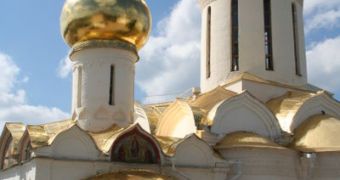It's common knowledge that gold is one of the most ductile materials. Architects are able to cover hundreds of square meters of building roofs with only a few grams of the stuff, which was the main reason why it was so widely used in the past, for decorating regal palaces and official structures of most empires that existed on Earth. Now, a team of researchers at the University of Toronto comes to dispute this knowledge, claiming that gold can harden when subjected to high temperatures.
Admittedly, the temperatures have to be about as high as those found at the core of the Sun, but UT chemistry and physics professor R.J. Dwayne Miller has managed to pull it off. The results of his experiments are published in the January 22nd issue of the journal Science.
“It is counter-intuitive, but the gold got harder instead of softer. Can you imagine a blacksmith heating up gold to pound it thinner, only to find it got harder? But we heated the gold at terrific heating rates – greater than 1 billion million degrees per second – that approach the temperature of the interior of stars,” Miller explains.
“A gold crystal consists of gold ions and weakly bound electrons which screen the repulsive forces between the ions,” Ralph Ernstorfer, a former postdoctoral research fellow and the lead author of the new study, adds. He says that if gold is heated gradually, the connections between the electrons weaken, and the stuff becomes ductile. However, if the heating is sudden, such as with short pulses of high-intensity laser, then the connections actually become a lot stronger.
“The effect of bond hardening in gold has been theoretically predicted. Now, we have actually observed it for the first time,” Ernstorfer shares. “We now have an atomic-level view of this rarified state of matter, referred to as warm dense matter, and can relate the observed liquid structure to the increased lattice stability,” Miller adds.

 14 DAY TRIAL //
14 DAY TRIAL //